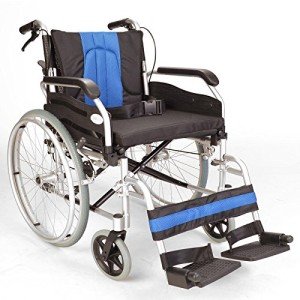Advantages of a Bariatric Travel Wheelchair
A bariatric travel wheelchair assists individuals with greater weight and height constraints maintain their self-reliance. Its strengthened components and sturdier frames support heavier users and prevent injuries for both the user and caregivers.
Understanding the differences in between a bariatric wheelchair and a basic chair can assist you decide which mobility device is ideal for your needs. Here are some of the crucial differences:
Seating
A bariatric wheelchair can improve mobility, self-reliance and lifestyle for larger individuals with a large range of conditions and disabilities. These specialized chairs include greater weight capacities than standard designs, as well as tougher frames and broader seats to accommodate larger physique. They also come equipped with a range of alternatives for comfort, safety and stability.
In addition to maximizing comfort and boosting day-to-day function, bariatric mobility items can lower the risk of complications like pressure ulcers. This is since they are designed and safety-tested to support higher weight capabilities without compromising stability or resilience. Nevertheless, to make sure an excellent fit and optimum pressure redistribution, wheelchair users must always receive a thorough seating assessment from an occupational or physical therapist (ATP).
The ATP will take into consideration the person's everyday requirements, mobility objectives and health status when recommending a chair. They will evaluate seat-to-shoulder, hip-to-heel and armrest-to-armrest ranges in a seated position to determine the suitable chair size. They will also consider the individual's weight history to make changes over time.
Other essential functions for bariatric mobility products include a padded seat, footrests and adjustable positioning. These functions help to enhance posture, prevent skin breakdown and promote blood flow. In addition, a bariatric wheelchair can typically be fitted with an anterior tilt that helps to help with sit-to-stand transfers. This can significantly reduce caretaker strain and provides dignified care.
For a portable and lightweight option, a bariatric transport chair is an excellent option. These mobility products feature smaller sized front wheels and larger rear wheels to make them easier to push, and they can be easily stowed in a trunk of a vehicle or in the house. They likewise feature removeable desk-length arms and detachable swing-away foot supports to improve transfer benefit. In addition, they have 12" rear wheels, a safety belt and handbrakes for safety. They include a deep red Hammertone surface and can support approximately 500 pounds. The breathable nylon upholstery is soft and long lasting, and the footrests are height-adjustable.
Frame
The frame of a bariatric wheelchair is often reinforced to support higher weight capacities and withstand damage from daily usage. Depending on the model, this may include additional cushioning or resilient fabrics that are easy to clean and resistant to bacterial development. These features assist to make sure the convenience and security of users and avoid skin breakdown from extended contact with material.

While basic wheelchairs can accommodate approximately 250 pounds, bariatric models are created with much greater weight capacity and larger seat dimensions. They are frequently utilized in healthcare facilities and residential care settings to improve mobility and lifestyle for obese individuals with health conditions that result in increased weight.
Picking My Mobility Scooters depends on the user's needs, environment, and mobility goals. It is also crucial to comprehend the distinctions in between bariatric and routine wheelchairs to make an informed purchase.
A bariatric wheelchair is frequently a better choice for overweight individuals who need additional support and stability while moving. It can offer better mobility by enabling the user to move easily and safely, even in tight areas. This can increase their confidence and self-reliance, boosting their quality of life. It can also work for individuals who require to check out family and friends, do chores around your home, or go on trips with a group of loved ones. To get the most out of a bariatric wheelchair, it is best to regularly check and preserve it. This consists of cleaning it, analyzing the wheels and frame for indications of wear and tear, and replacing or repairing any broken parts. It is advised to have an expert technician do these repairs, as this will help make sure that the chair remains in good working condition and safe to use.
